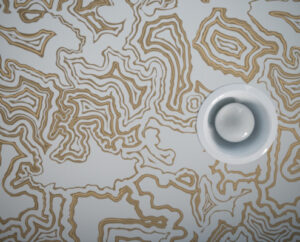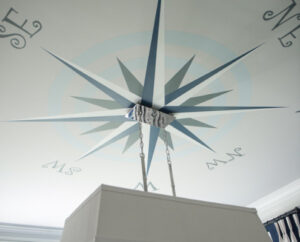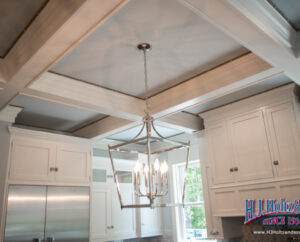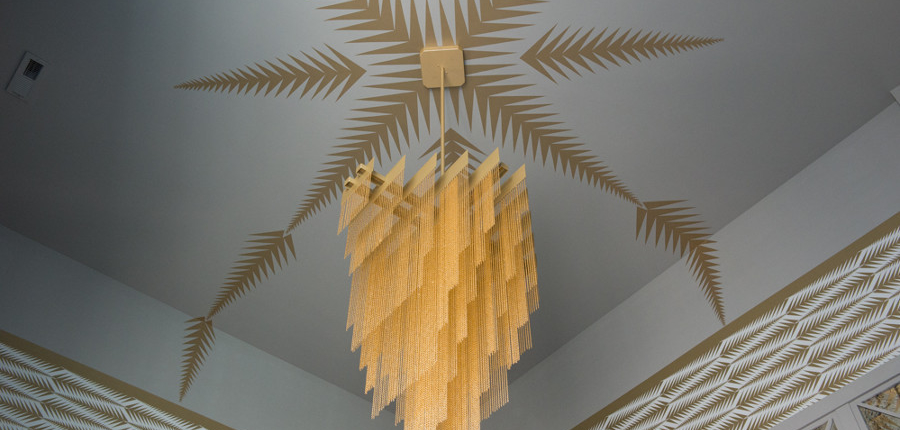Decorative Ceilings – Not Just for the Sistine Chapel
Interior professionals and savvy homeowners know a room’s ceiling deserves attention. Commonly referred to as “the fifth wall” – and equal in size to the floor – the ceiling can become a dramatic or wonderfully supportive capstone. When approached with thoughtful consideration, a decorative ceiling sets a tone that may not be immediately recognized, but will be felt.
Humans have sought ways to enliven their living quarters for thousands of years, as cave paintings in both southwestern and southeastern France attest. In fact, paintings in the Chauvet-Pont d’Arc cave are carbon dated at more than 30,000 years old. Cave images, on the walls and ceilings, depict animals and plant life – what people saw around them.
The ancient Egyptians, well known for paintings found in the tombs of pharaohs and the wealthy, mixed ground glass, semiprecious stones, lead, dirt, and animal blood with fats or oil to create their paints. In later places and times, people used water and oils to mix paints with any pigment at hand, with varying success.
It wasn’t until 1718, in England, when Marshall Smith invented his “Machine or Engine for the Grinding of Colours” that paintmaking became a mass industry. More than 100 years later, linseed oil became the industry standard base, because it added durability to paint. In addition to its decorative qualities, paint could be relied upon to protect the surface it covered, acting as a moisture barrier, protecting a wall from dry rot or mold. Walls could also be cleaned and not immediately require another coat of paint.
Historically, decorative ceilings were included in a home’s interior scheme. The Romans incorporated reliefs, adding texture and depth, and would highlight the designs with accent painting. In the Renaissance, artists changed the shapes and heights of ceilings, and also painted images on the ceiling, creating large, framed artworks to be gazed upon (presumably, while reclining on a comfortable sofa).
Decorative ceilings were used to make homes seem more luxurious and expensive than they were, with faux techniques indicating the ceiling was something other than inexpensive wood – marble, copper, unusual (and expensive) burled wood, etc. Sometimes, ceilings were painted with clouds and angels, a wish of life to come.
In the United States, in the early 20th century, ceilings often had beams, which were set off with paint color, stencils, even burlap or paper covering. But after the Depression, more families opted for white paint for the ceiling. White paint was less expensive than tinted, and, if the family chose to change the colors of the vertical walls, the ceiling could be left alone, another cost-savings.
At H.J. Holtz & Son, decorative ceilings are among the most dramatic projects team members execute. Techniques range the gamut: wallpapers to high-gloss finishes, free-hand painting to elaborate stencils placed to highlight a central fixture or interesting shape. A decorative ceiling can visually enlarge a small room or bring intimacy to a large room. Best of all, citizens today aren’t likely to be brought up on charges of sacrilege, as a Charlestown colony preacher allegedly was in 1630 – for painting the interior of his house.




